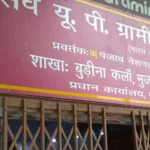New Delhi: Analysts at Citigroup Inc have raised concerns about the narrow pricing gap between palladium and silver amid potential tariffs on critical minerals. With US futures prices for precious metals experiencing volatility, the recent inclusion of silver in a critical minerals list has intensified discussions around possible tariffs, which could impact the banking sector and the broader Indian economy.
Rising Concerns Over Precious Metal Prices
In a recent analysis, Citigroup Inc highlighted significant issues regarding the prices of palladium and silver in the context of impending tariffs on critical minerals. The analysts specifically pointed out that the current pricing—only 2-3% premium over ex-US prices—does not adequately reflect the risk of tariffs. This situation poses challenges for traders who must make decisions in an unpredictable market climate.
Earlier this year, US futures prices for numerous precious metals surged above the London benchmark prices, as market participants anticipated potential import levies. Those who correctly anticipated shifts in US trade policy reaped substantial profits, while those who misjudged the situation often incurred hefty losses.
Market Dynamics and Recent Developments
In April, a notable shift occurred when palladium, platinum, and silver used on the COMEX futures exchange were exempted from formal tariffs. This exemption led to a collapse of the spreads, causing a reevaluation of the market dynamics. However, recent developments have added complexity to the pricing landscape for these crucial metals.
Analysts, including Tom Mulqueen from Citigroup, indicated that the inclusion of silver on a list of 54 critical minerals designated as vital for national security is a critical factor influencing current price behavior. The upcoming review under Section 232 of the Trade Expansion Act could enable the government to impose tariffs on these imports, thereby further affecting prices.
Potential Tariffs Impacting the Banking Sector
Citi analysts project that targeted tariffs on some metals could reach as high as 50% by the time the Section 232 report is published in October. This anticipated action may have broader implications for the banking sector and the overall Indian economy, as the costs of importing essential minerals rise. With the banking sector heavily engaged in commodities trading and financial services linked to these precious metals, potential tariff implementations could necessitate strategic adjustments.
The anticipation around rising costs has already triggered discussions within industries dependent on these metals. For example, businesses involved in manufacturing catalytic converters, which predominantly use palladium, may find themselves scrambling for adapted supply chains to mitigate the impact of tariffs.
Government Initiatives and Trade Policies
Adding to the pressure, the US Commerce Department recently initiated an anti-dumping investigation of unwrought palladium from Russia, another development underscoring the importance of trade policies on precious metal prices. According to Citigroup’s base case, it is likely that tariffs will be levied as a result of either this investigation or the ongoing Section 232 review.
In light of these developments, the possibility for enhanced domestic production of these metals is becoming increasingly vital. Citigroup analysts emphasized that lobbying efforts aimed at promoting domestic production may influence how metals and minerals are treated under tariff regimes.
Conclusion: Preparing for Market Changes
As both traders and industries brace for possible tariff changes, the implications for the banking sector could be profound. The Indian economy, closely linked with global markets, may face ripple effects that require businesses and financial institutions to reassess their strategies proactively.
Given the unpredictable nature of commodity pricing influenced by market dynamics, staying informed is essential for stakeholders in the sector. The delicate balance of cost, trade policy, and market response will shape investment decisions and economic strategies in the coming months. For now, traders and businesses must navigate the complexities of an evolving market while preparing for potential tariffs that could reshape the future landscape of precious metals trading.
Bankerpedia’s Insight💡
The narrowing price gap between palladium and silver reflects heightened volatility in global commodities, driven by US tariff uncertainties. For India’s banking and finance sector, this could signal shifts in investment strategies and risk assessments, particularly in the commodities market. Traders may need to reconsider hedging strategies due to potential tariffs impacting import costs. As a result, maintaining an agile approach in financial planning and investment will be vital. Staying informed about global policy changes can help stakeholders navigate these complexities effectively.
What Does This Mean for Me?🤔
- Salaried Person → Potentially higher costs for goods and services they buy.
- Business Owner → Increased costs for importing critical metals, impacting profits.
- Student → Potential price increases for metals may affect student budgets.
- Self-employed → Increased material costs and potential profit volatility for trades.
- Homemaker → Higher metal prices could increase household expenses for homemakers.
- Retiree / Senior Citizen → Higher metal prices could impact living costs for seniors.
- Job Seeker → Increased job opportunities in metals production sectors.
- Farmer / Rural Citizen → Higher metal prices could increase costs for agricultural inputs.
Research References📚
📲 Stay ahead in banking & finance!
Join the Bankerpedia WhatsApp Channel for instant updates, and
subscribe to our YouTube Channel for in-depth analysis and expert explainers.









